Welcome to our latest update on the Brisbane property market where we answer questions like – Will the current upward trend continue? Have prices already peaked, or will values climb higher? What locations show the greatest promise in 2025?
In this post, we’ll explore the latest insights on the Brisbane property market. We’ll analyze factors impacting growth cycles across the city and suburbs. We’ll also look at predictions from leading experts and indexes that track home price movements.
Whether you’re a homeowner, renter, buyer or investor in Brisbane, understanding where this dynamic market is headed and why can help guide significant financial decisions on the horizon. Working with a mortgage broker in Brisbane can provide valuable insights and options for navigating this evolving landscape.
Table of Contents
Brisbane Property Market Overview
Brisbane’s 2025 property market promises strong fundamentals underpinned by surging demand, tight supply dynamics and impressive growth.
Over the past few years, Brisbane has seen some of the fastest-rising home values in the country, with prices rising by a massive 55.2% since the start of the COVID-19 pandemic.
Brisbane property prices are now at an all-time high of $924,498, making it Australia’s second most expensive capital city.
According to ANZ, property prices in Brisbane are set to increase by 5-7% in 2025. It looks like Brisbane will be one of the strongest property markets this year.
Big Four banks' predictions of what property prices will be in Brisbane in 2025.
Here is a table summarising the predictions for Brisbane’s property market from the big four banks for 2025:
Bank | Price increase Prediction |
Westpac | 3.0% |
NAB | 5.0% |
5.0% | |
CBA | 3.0% |
What's driving the growth?
There are many reasons why Brisbane has such a robust property market, but the main one is immigration. Queensland’s population is expected to grow by over 16% by the time Brisbane hosts the Olympics in 2032. That’s a lot of people who will need somewhere to live, and most of them will be moving to the Greater Brisbane area.
Infrastructure development, economic stability and limited housing supply are also putting upward pressure on property prices.
Is it a buyers' market or sellers' market right now?
As we are in at the beginning of the first half of the year, Brisbane’s property market strongly favours sellers.
There’s a lot of buyer demand and low supply. That means that properties are attracting multiple offers and often sell very quickly for top dollar.
But if you’re looking for a home to buy and frustrated at the moment, don’t lose hope – there are many sub-markets in Brisbane, and they all have different market dynamics.
There are still reasonably priced houses out there if you know where to look.
Median Price Trends for Brisbane
Right now, Brisbane has way more people wanting to buy homes than there are homes for sale, making it a sellers’ market.
To understand where Brisbane’s housing market is heading, it’s helpful to look at how median prices have changed over recent years.
Over the 2013-19 period, Brisbane saw steady but unremarkable growth in its median house price. Prices rose just 2-5% yearly – decent but not exceptional.
Apartment prices were even more subdued, actually falling in some years after an oversupply from a construction boom.
But in 2020 and 2021, Brisbane home values absolutely skyrocketed, fueled by record-low interest rates and pandemic-driven demand shifts. Brisbane’s median house price rose a whopping 27% through 2021 alone, outpacing growth in Sydney and Melbourne during the same period.
In May 2022, the median Brisbane house price hit an all-time high of over $900,000. However, rising interest rates, inflation, supply chain issues, and general economic uncertainty brought this rapid growth to a halt. Values fell almost 9% into early 2023 as the previously red-hot market cooled and even reversed.
By February 2023, however, Brisbane median prices were powering upwards again, surpassing the previous peak in mid-2022. The latest data as of November 2024 shows median house prices sitting around $974,025 and median unit prices around $669,254. Strong interstate migration and improving affordability relative to southern capitals continue attracting buyers, while rental demand is also driving increased property values around the city. So, in summary – Brisbane saw minimal price growth for years before exploding in the 2020-2022 boom and then receding again. Now, values are hitting new record highs, once more promising strong future growth for this rising market.
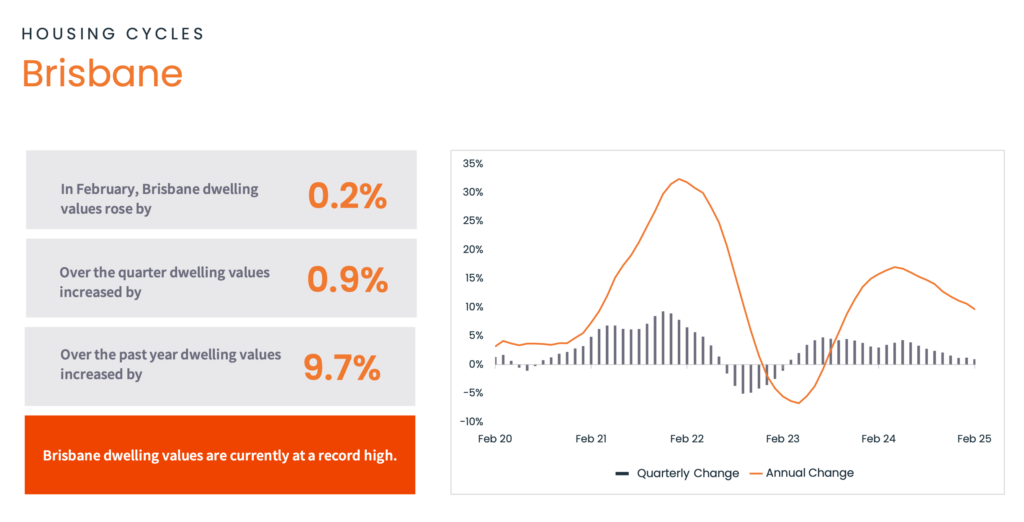
2025 Outlook for Brisbane
Strong demand is likely to continue through 2025.
Brisbane’s property values are primed to keep rising strongly in 2025.
Experts predict the market will continue its impressive rebound, which began around February 2023. Home values are already up over 9.7% in the past year, and further growth is expected.
What’s driving this? Brisbane will host the 2032 Olympic Games, sparking over a decade of infrastructure development and population increases. Excitement is growing as the city prepares for its global showcase. Compared to Sydney and Melbourne, Brisbane also continues to attract interstate migration thanks to affordability, job growth, and lifestyle appeal.
These factors indicate significant housing demand ahead. As long as interest rates and economic conditions remain steady, the market looks set to prosper into 2024.
Some newer neighbourhoods and renewal corridor areas will come into focus for buyers and investors as Brisbane’s transformation progresses towards the Olympics. Transport upgrades and other infrastructure projects are also upgrading certain suburb profiles.
At the same time, rental demand continues to strengthen while rental supply tightens across the board. Investors are set to capitalize on rising rents. But renters may find prices heading out of reach as vacancy rates decline.
Although you should always take the predictive forecasts with a grain of salt, Brisbane will likely see sustainable growth and outsized attention as Australia’s rising major market this year.
Will House Prices Rise or Drop in Brisbane in 2025
Expect property prices to continue rising in 2025.
Current projections based on robust data see Brisbane home values continuing to rise in 2025.
ANZ Bank predicts a 5-7% increase in property values for Brisbane in 2025.
According to NAB, house prices will rise by 5%.
Leading indexes from CoreLogic, Domain, and SQM Research all show Brisbane house prices climbed over 11% last year.
Market Statistics
Monthly Sales Volumes
In Brisbane, the number of houses sold in the last year has significantly increased by 3.9%.
This higher sales volume is a sign that Brisbane is still experiencing growth, albeit at a slower pace.
Changes in sales volumes – 12 months to February 2025
Median Days on Market
Brisbane’s median days on market is currently 27 days, which is a sign of a highly competitive market.
Brisbane is outperforming the national average and combined capitals.
If you’re looking to buy property in Brisbane, you’ll need to move quickly, or you risk missing out.
Median days on market – 3 months to February 2025
Vendor Discounting
Brisbane’s vendor discounting rate is lower than the National and Combined Capital average.
This means that properties in Brisbane are selling closer to their asking prices. In other words, sellers don’t really need to negotiate on price.
If you’re looking to buy, expect a competitive environment with less wiggle room on prices.
Median vendor discount – 3 months to February 2025
5 Suburbs to Watch in 2025
As Brisbane’s property market continues to evolve, certain suburbs stand out as areas to watch in 2025. These suburbs, identified by various sources, offer unique opportunities for growth, investment, and lifestyle. Here are five Brisbane suburbs that are expected to make significant strides in the coming year.
Murrumba Downs
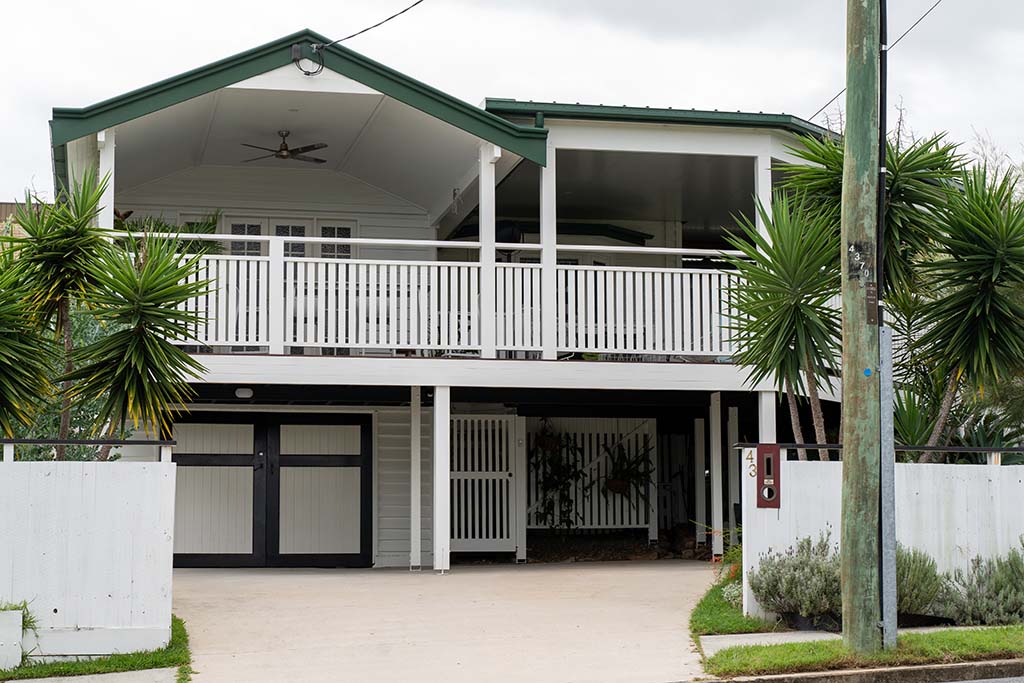
Located in the northern growth corridor of Brisbane, Murrumba Downs could emerge as one of the up-and-coming suburbs of 2025. With a median house price of $755,727 (up 18% over the past year) and median unit price of $481,974 (also up 18%), it offers both affordability and impressive value growth in a family-friendly locale.
Just a 25-minute drive from Brisbane CBD, Murrumba Downs appeals to first home buyers thanks to land availability and home/townhouse development opportunities. New infrastructure like the $1.2 billion Moreton Connector which will improve access to the area adds to the investment appeal.
Meanwhile amenities like schools, shops, parks and transport ensure livability for residents. And major employers nearby in logistics, healthcare and education provide local job opportunities.
With Brisbane’s increasing unaffordability in many near-city suburbs, outer growth areas like Murrumba Downs offer relative bargains for buyers being priced out elsewhere. Yet the area still delivers good owner-occupier and investor upside based on infrastructure upgrades and population expansion in Brisbane’s northern corridor. For these reasons, Murrumba Downs shapes up as a suburb to watch in 2025.
Clontarf
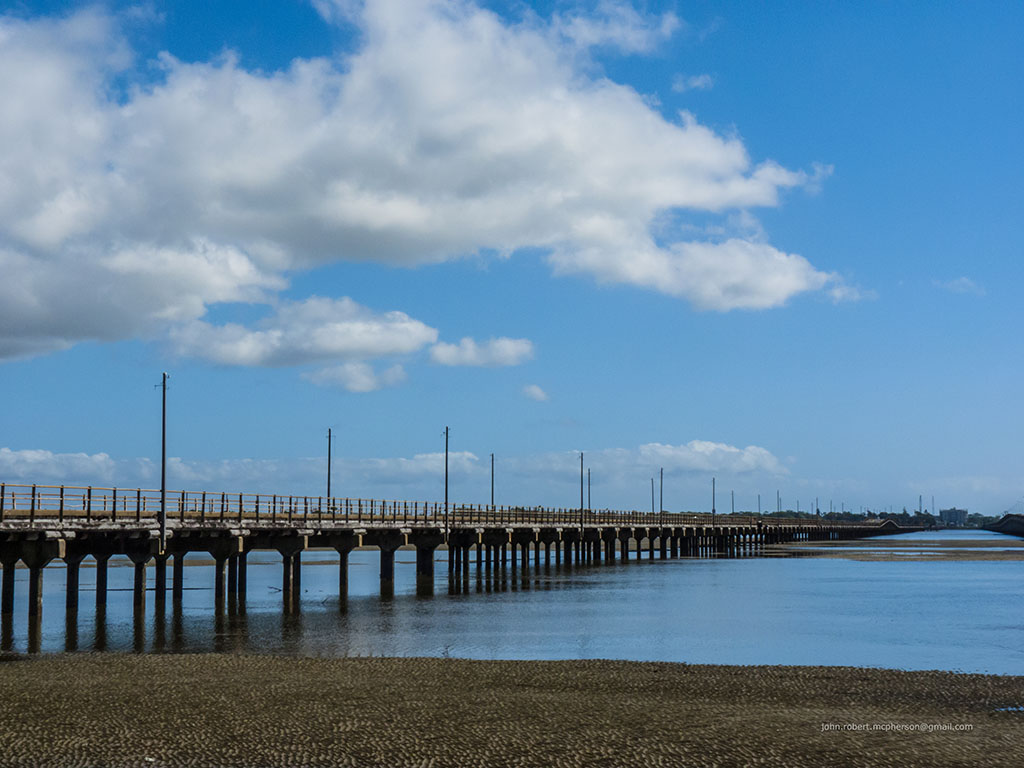
Situated just 15km northeast of Brisbane’s CBD, the bayside suburb of Clontarf looks poised for an impressive 2025 based on its latest home price growth trends.
With median house prices already exceeding $888,000 (up nearly 24% last year) and median units also surpassing $793,000 (up almost 22%), this family-oriented locale clearly offers coveted lifestyle attributes.
Nestled between the waterfront and beachside suburbs of Brighton and Redcliffe, Clontarf provides a slightly more affordable entry point to Brisbane’s coastal corridors that still delivers investors and residents blue-chip amenities.
Excellent schools, retail options, public transport and recreation facilities service the area.
And major infrastructure upgrades to the nearby Hornibrook Highway corridor continue increasing accessibility and economic activity in Clontarf’s vicinity.
With its activity centres, employment nodes, marina precincts and village vibes, Clontarf gives homeowners peaceful community feels near the water while remaining commutable to Brisbane for work.
Continued development in the broader Moreton Bay region should keep demand for Clontarf properties elevated into 2025 after last year’s exceptional growth.
Woolloongabba

The inner-city suburb of Woolloongabba epitomizes Brisbane’s property market resurgence in 2023. With median houses prices now exceeding $2 million (up over 24% in the past year) and median units approaching $1.2 million (up 6.9%), this once predominantly industrial area has transformed into one of Brisbane’s most sought-after urban neighborhoods.
Located just 2kms from the CBD and anchored by the Gabba cricket ground, the “Gabba” suburb is at the epicenter of Brisbane’s 2032 Olympic development zone. Billions in infrastructure, venue upgrades and transport improvements are propelling a wave of renewal. This Olympic facelift will reshape Woolloongabba over the next decade.
The area has also become a foodie hotspot and nightlife destination despite ongoing gentrification. Investors and homeowners alike are capitalizing on the conveniently located suburb as Brisbane’s popularity increases. With access, amenities, employment and entertainment at its doorstep, Woolloongabba sits poised to deliver exceptional growth through Brisbane’s next chapter.
Deception Bay
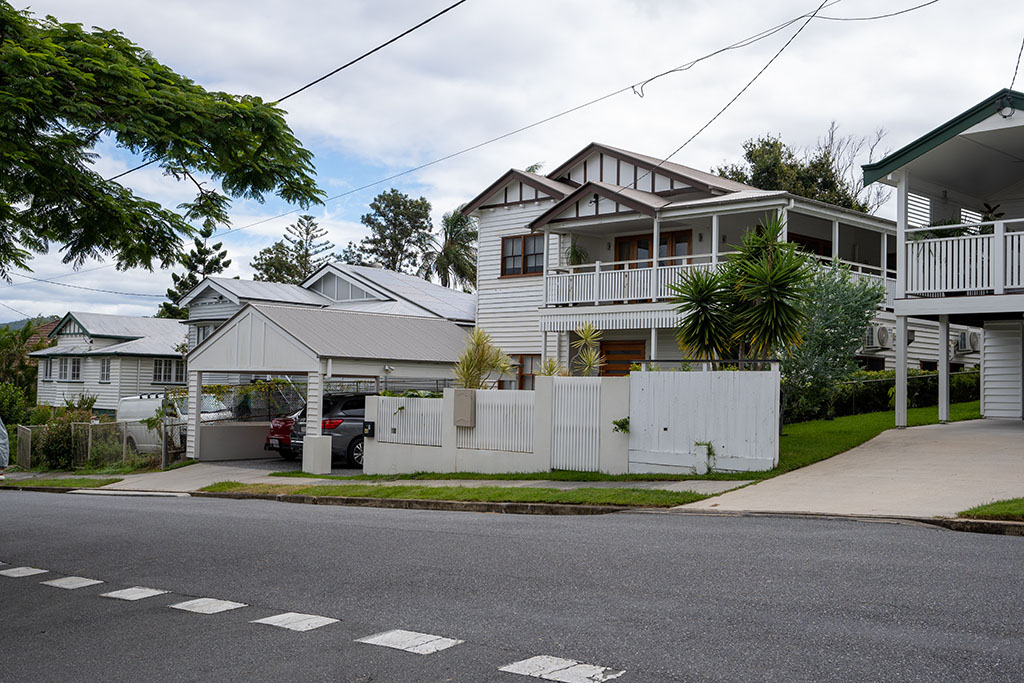
One of Brisbane’s top growth suburbs of 2023, Deception Bay looks set to continue surging in 2025. Located in the Moreton Bay region about 35km north of Brisbane, this suburb saw exceptional median house price growth last year, skyrocketing over 225% to reach $692,184. Units rose a more modest 10% to $424,117.
This hitherto overlooked suburb is transforming thanks to major infrastructure connectivity via the new Moreton Connector toll road project, which will significantly improve accessibility. New residential developments are also revitalizing the area and drawing buyer interest.
Meanwhile, Deception Bay maintains affordability compared to many near-city suburbs, while delivering on livability with a quality mix of local schools, parks, services and facilities on offer for families. Proximity to both beaches and Brisbane adds to its popularity.
With exceptional growth already achieved in 2023, Deception Bay still seems undervalued and poised to prosper further as infrastructure unlocks economic potential for this revitalizing locale. Investors and homebuyers should keep close watch for emerging opportunities.
Redcliffe
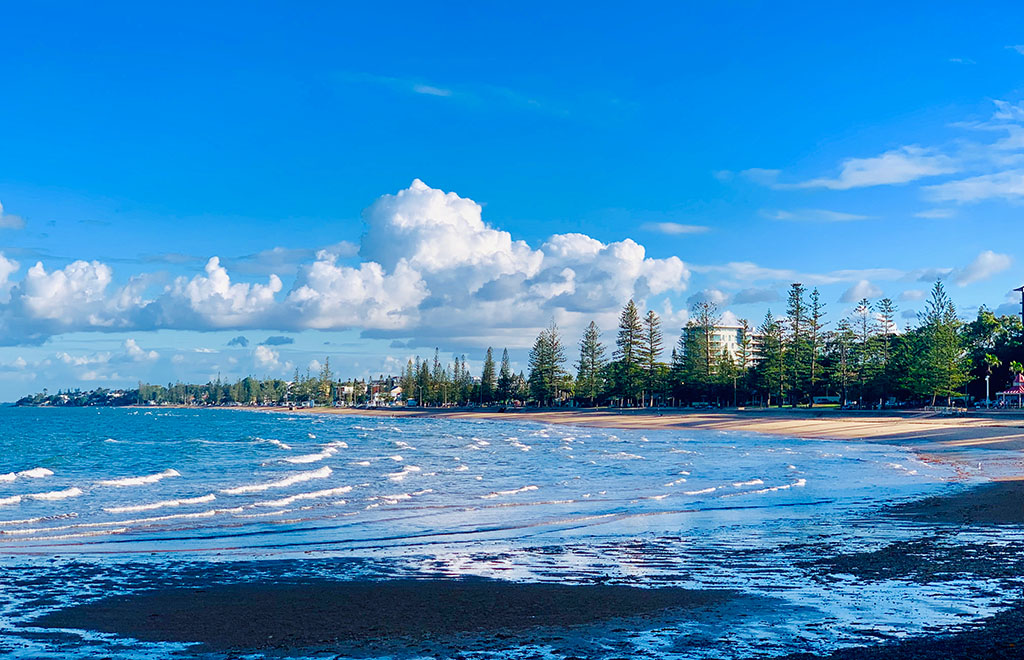
Boasting median house prices exceeding $1.25 million (up an impressive 32% last year) and median unit prices over $800,000, the bayside suburb of Redcliffe has emerged as one of Brisbane’s standout performers.
Just 30kms northeast of Brisbane’s CBD, Redcliffe offers a mix of sea and city convenience, making it a magnet for homeowners and investors even at premium price points. Excellent infrastructure like the nearby Redcliffe Peninsula railway line and numerous development projects continue transforming this once-quiet locale into one of Queensland’s most dynamic waterfront communities.
With the geographic constraints of Moreton Bay on one side and urban boundaries on the others, Redcliffe has limited land available as buyer demand accelerates. Meanwhile amenities like schools, retail, healthcare and recreation already rival many metro areas. These factors should keep property appreciation humming in Redcliffe through 2025.
The one downside may be unit oversupply, with apartments only rising 3.2% last year. But houses show no signs of slowing as Brisbane’s foremost coastal suburb for those seeking sand and city in one location.
Top 5 Growth Suburbs in Brisbane
This statistic is based on the last 10 years of performance.
- Grange – 139.9%
- Camp Hill – 136.8%
- Kalinga – 132.5%
- Wishart – 126.2%
- New Farm – 125.3%
All of these areas are what would be considered almost bluechip locations.
Top 5 Crime Suburbs in Brisbane
What’s interesting is that the areas where crime has been identified as being the highest quite often areas where there’s higher density development. So areas with a lot of high density units. Here is the list of the top crime suburbs in Brisbane.
- Chermside is currently in top position
- Upper Mount Gravatt
- Woollongabba
- Inala
- West End
Something to note is that because there are a lot more people in smaller area, the volume of crimes in these locations tend to be higher. If we were looking at crime per capita these numbers would be different.
These crime statistics don’t necessarily impact price but you do need to be aware of them. For example if you’re a single female looking to buy your first home you just need to be aware of the neighborhood that you’re buying into. There are going to be some locations where crime will impact on desirability. So that’s something that you need to be aware of as a buyer. But as we said in areas where there’s high density it is expected that there’s going to be higher crime rates simply because there’s a higher concentration of people in a smaller space.
Factors Affecting Supply and Demand in the Brisbane Property Market
Property prices are ultimately driven by one simple thing: supply and demand.
The number of properties listed for sale is the supply side.
The number of people willing to buy those properties is the demand side.
If there are more properties for sale, and fewer interested buyers, then prices will decrease.
If there are more interested buyers, and not enough properties for them to buy, then prices will increase.
Here are the main factors that affect supply and demand in Brisbane’s property market:
Current Construction Activity
Brisbane’s construction landscape is bustling with significant projects that are set to transform the city. Major developments include the $1.7 billion Brisbane Metro project, with services expected to run from 2024, and the Kangaroo Point Green Bridge, slated for completion in late 2024. These infrastructure projects are crucial in shaping the city’s future and potentially influencing the property market by improving connectivity and accessibility. Source: BEDA
Developer Activity
Developer activity in Brisbane is focused on high-performing areas, particularly inner and middle-ring suburbs. This activity is expected to influence the property market significantly, with a focus on creating housing that meets the growing demand in these desirable locations.
Interest Rates
As of 2024, interest rates in Australia are a critical factor to watch. ANZ predicts rates to remain stable at the current 4.35% through 2024, with a potential 25 basis points rate cut later in the year. This stability in interest rates could influence buyer affordability and impact the property market demand. Source: Forbes
Government Policies
Government policies impacting the Brisbane property market in 2024 include various measures introduced in the 2023-24 Federal Budget. These policies are expected to have a positive impact on the real estate market.
Migration Trends
Migration trends significantly impact Brisbane’s property market. Queensland has been attracting a large number of interstate movers, with net migration figures being notably high. This influx of population is a key driver for housing demand in Brisbane, influencing both the rental and purchase markets.
In summary, Brisbane’s property market in 2025 is being shaped by ongoing construction and development projects, stable interest rates, government policies, and significant migration trends. These factors collectively influence the supply and demand dynamics in the market, with implications for both buyers and sellers.
Key Infrastructure Developments in Brisbane
Brisbane is currently experiencing what has been described as a “once in a generation” infrastructure boom. There are currently billions of dollars of major infrastructure projects either underway, or well into the planning stages.
Infrastructure developments have a twofold effect on housing demand. In the short term, they provide employment opportunities and attract migration, both interstate migration and international migration.
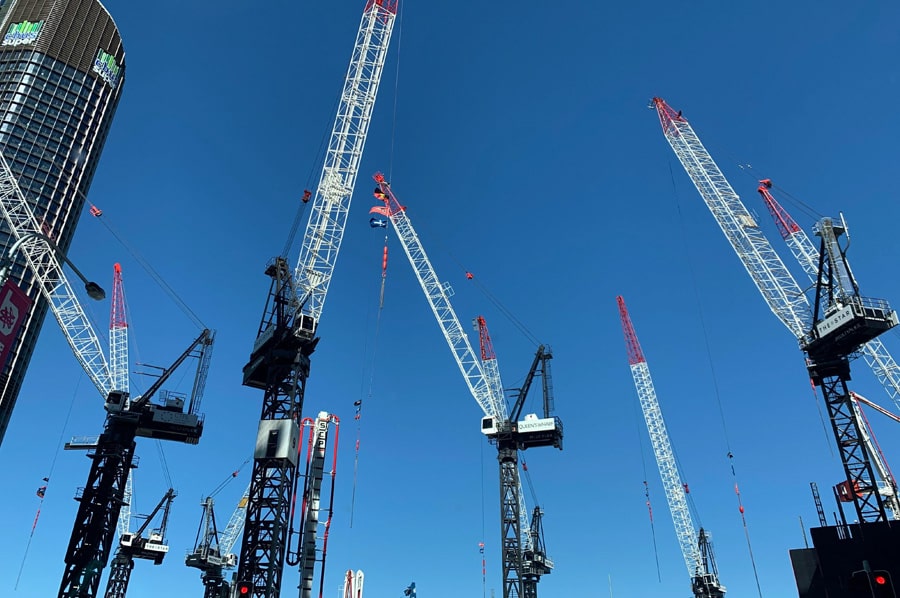
In the long term, these infrastructure improvements improve transportation options, lifestyle options, employment opportunities, and tourism offerings.
The new Brisbane airport runway and the redevelopment of Howard Smith Wharves (both completed) are just the beginning.
Some of the major infrastructure offerings currently in the works include the Cross River Rail, Brisbane Metro, Queen’s Wharf, Brisbane Live, Victoria Park, Waterfront Precinct, Herston Quarter, International Cruise Terminal, and West Village.
Here’s a brief overview of the other infrastructure projects currently in the works:
Ready to Buy? Here are Your Next Steps
If you’re feeling motivated to get into Brisbane’s rebounding property market but aren’t quite sure how to start, the expert team at Hunter Galloway can guide you.
As an award-winning mortgage broker dedicated to helping Australians realise their property ownership dreams for over 10 years, Hunter Galloway has the knowledge and experience to provide advice tailored to your situation.
Our team of finance specialists offer services like:
- Free custom property valuation to access accurate estimates in your area of interest
- Assessment of current market conditions to determine optimal locales and property types to target
- Review of your borrowing capacity so you buy within responsible means
- Access to exclusive mortgage deals from their extensive industry network
- Guidance negotiating the conveyancing, loan approval and administrative processes
Whether you’re a first home buyer looking to get on the ladder, an investor seeking to leverage equity, or upgrading your residence – Hunter Galloway can help make it happen.
Reach out for a free, no obligation consultation today:
- Call: 1300 088 865
- Contact us for a free assessment
Let the friendly local experts at Hunter Galloway provide a helping hand to navigate Brisbane’s strengthening property market. They’ll set you on the right path to ownership success!






 Start again
Start again










